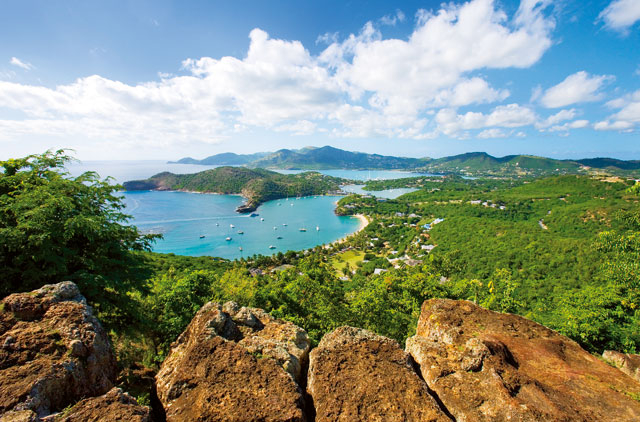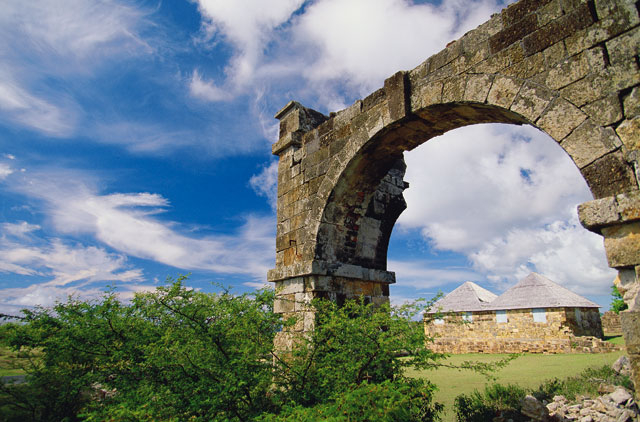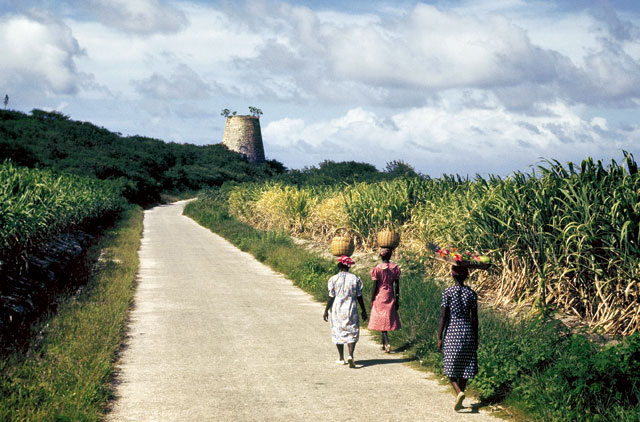
The lady from Antigua's tourist board doesn't seem too happy. In fact, she looks downright miserable. Which, considering her home is an island that boasts 365 heart-stoppingly beautiful beaches - one for each day of the year - is a little galling to say the least. If it were me living here you would have to excuse the permanently smug smile on my face because this Caribbean piece of land, east of St Kitts and north of Guadeloupe, is the stuff Bounty adverts are made of.
But it seems that all is not well in paradise. As we stand on a halo of glistening white sand (don't ask me which beach, I lost count after 34) she confesses that her next stop of the day is an appointment with the divorce lawyer. "Enough is enough," she says tearfully, as we gaze out at an incongruously tranquil Caribbean sea. And I realise that there's more to Antigua than meets the eye.
I was visiting the island with a girlfriend, a fellow sun worshipper with a curiosity to see beyond what Antigua is best known for - beaches and cricket. Celebrities and the super-rich flock here for the sailing and sunshine - Oprah Winfrey and Eric Clapton call the island home during the winter months. In the summer, Antigua, like all Caribbean islands, has a slim risk of being affected by hurricanes, although the region is closely monitored by meteorologists. In fact, June to September is the time you'll be able to pick up the best bargains and benefit from the less crowded beaches.
So much more than sand and sea
Antigua got its name from Columbus in 1493, although he didn't set foot here. In 1632, English settlers moved in and began growing sugar, which was to guarantee the island its future wealth.
Today, one of the greatest allures is that every beach is open to the public and it's overwhelmingly tempting to do nothing more with your holiday than lie out with a good book. But trust me, this would be a crying shame because Antigua has so much more to offer than sand and sea.
I have to admit I was a bit worried as our taxi from airport to hotel turned away from the coast, inland and uphill. There are so many resorts hugging the Caribbean sea on one side and Atlantic on the other that I suddenly questioned my sanity in choosing to stay away from the beach. But as we left the tourist hubbub behind and felt the breeze on our faces, it suddenly made perfect sense.
Perched above Jolly Harbour, on the west coast, is one of Antigua's best-kept secrets nestled in the hills and away from the offerings you might find elsewhere on the island. Sugar Ridge is a boutique spa retreat that offers guests the perfect setting in which to experience an alternative Antigua that is peacefully surrounded by lush sugar cane fields. The hotel has the Caribbean's first Aveda spa.
Rooms are dark-wood bungalows built into the hillside. Access is by golf carts driven by hotel staff, some of whom - be warned - subscribe to the Lewis Hamilton approach to driving. But the view from the top is worth it. Each room comes with a spacious terrace and some even have their own plunge pools overlooking the forest and the sea below.
Standing there, as dusk falls on my first evening, there is nothing to hear but the relaxed croak of tree frogs and nothing to see but a kaleidoscope of orange as the sun sinks into a stupor over the bay below.
Our first day had us venturing to the island's lush interior with Vorn - Sugar Ridge's guide - known, among locals, as ‘the medicine man'. A Rastafari with a toothy grin, he has an unquestionable talent for communing with nature and is passionate to prove that Antigua's tourist board slogan: ‘The beach is just the beginning' is true.
In an open-top 4x4 we head for Fig Tree Drive, which takes us deep into the island's rainforest and past Claremont Pineapple Farm, where Antigua's black pineapples have been grown for more than 100 years. They're a local delicacy and rarely grown commercially as they yield a crop a fraction the size of the more common varieties. But when Vorn peels and slices me a chunk of golden flesh - the skin of which darkens when it's ripe - it's the most delicious pineapple I've ever tasted.
Nature's bounty
Vorn is a veritable mine of information about the natural preserves Antigua has to offer, telling us how an upset stomach can be cured with pomegranate peel and insomnia with boiled soursop leaves.
As we proceed, the road winds upwards following the streams that feed the luscious vegetation. There are hibiscus plants everywhere, banana trees that Antiguans call fig trees and a few fig trees that they also call fig trees. Vorn also points out the poisonous Manchineel tree. Standing under this plant in a storm can leave you looking like a burn victim if the raindrops touch the fruit before landing on your skin. Another unique attraction - often overlooked by tourists - is Devil's Bridge, located at the eastern tip of the island. Here, Atlantic breakers have carved out a natural limestone arch - a crossing formed by the erosion of the rock underneath by the sea. There's something truly dramatic about standing here as the waves thunder underneath you.
Sadly, the bridge got its name because so many slaves took their lives here, throwing themselves into the water below. It's a harsh, evocative reminder that while tourism is what makes the island tick today, Antigua's main industry was once the sugar trade, and with that came harsh colonialism and inhumanity.
Wealthy planters who colonised the island sought slaves from Africa and for 200 years Antigua's inhabitants lived under a cloud of terrible suffering.
This is never more evident than when you see some of the local villages where houses are still only occupied along one side of the road. Even though slavery was abolished in 1809, old memories die-hard. The Antiguans still refuse to live on the same spot as the masters who once inflicted such cruelty.
Don't miss the hot spots
There will always be some tourist attractions worth seeking out and The Lookout in Shirley Heights has got to be one of them. Once a strategically important military fortification built 1,200 feet above English Harbour during the Napoleonic Wars, it is transformed every Sunday afternoon into an impromptu open-air party with barbecues and steel bands. As the sun sets over green hillsides plunging down to the water below, the air fills with the sound of Bob Marley. You may think it's predictable, but I didn't see anybody with their feet still.
Of course, Antigua's not for everyone. Admiral Horatio Nelson, who was once a frequent visitor (the island's famous Georgian dockyard in English harbour is named after him) concluded that the island was ‘a vile spot' and ‘an infernal hole'.
Well, I think he was wrong. Antigua's got so much to offer. You just have to dust the sand off your feet and get out there.
Off the tourist trail...
- Visit Betty's Hope, a reconstructed 17th-century sugar mill, on the site of the first plantation in Antigua. It is the only fully operational wind-powered sugar mill in the Caribbean.
- See the rainforest from an exhilarating vantage point. The Antigua Rainforest Company will have you hooked up to zip wires and above the trees on a 90-metre-high course. The 90-minute adrenaline-raiser costs $50 (Dh183) for kids; $89 (Dh326) for adults. For more information see antiguarainforest.com
- A boat trip to the uninhabited Green Island takes you to deserted beaches and coral reefs teeming with tropical fish. Ferries leave at 11am and 1.30pm daily from the jetty near the Harmony Hall Hotel.






